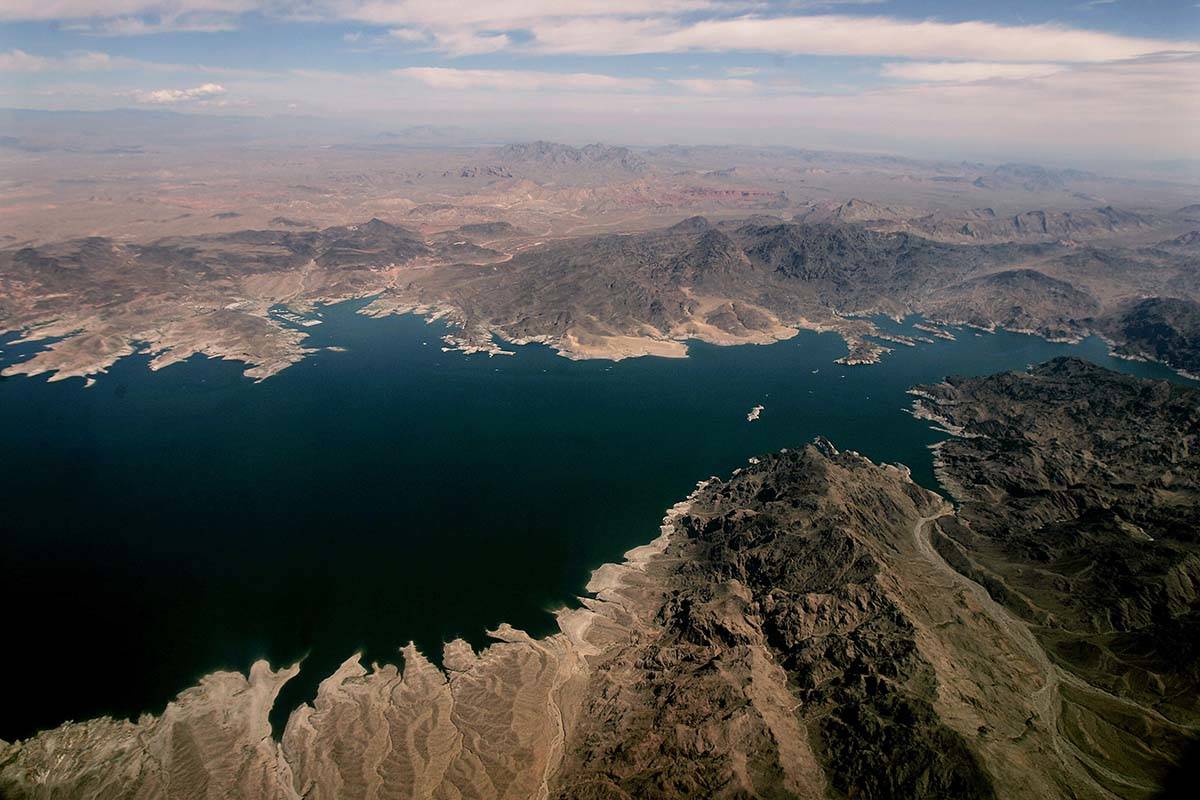EDITORIAL: The taps will run despite Colorado shortage designation
For the first time, the federal government this week declared a “water shortage” next year for Lake Mead, which is at historic lows. The declaration has led to confusion and some bad policy proposals.
In reality, the shortage will mean little for Las Vegans in the short term. Nevada and Arizona must now make do with cuts to their annual allocation from the Colorado River, but both states have prepared for years for this. In fact, conservation and other measures have led to steep reductions in Southern Nevada’s water use over recent decades despite increasing population.
Environmentalists point to climate change and drought as the reason for dropping water levels, but the reality is more complicated. Drought has been more the norm than not in the Southwest for the past 125 years. And as the late Marc Reisner noted in his important 1986 book, “Cadillac Desert,” the Colorado River was over-allocated from the start, when political interests from seven Western states divvied up the resource in 1922. That compact will expire in 2026, but the distortions cemented into policy for a century by optimistic assumptions about water flow have helped us get to where we find ourselves today.
The shortage declaration has led to inevitable calls for building moratoriums in Clark County and for other anti-growth policies. But these would be recipes for decline and deterioration, pushing Nevada down the same path that has led to soaring housing costs and other pathologies in California. There is simply no way to erect a fence around Southern Nevada without destroying the qualities that made the region a draw in the first place.
And let’s remember that residential development can hardly be blamed for the Southwest’s water issues. Agricultural uses account for more than 70 percent of the water diverted from the river — and the crops are often water-intensive, such as cotton and alfalfa. Does it make sense to irrigate thousands of acres each year in the Arizona desert with billions of gallons of water from the Colorado?
Even with falling water levels at Lake Mead, the problem isn’t so much a lack of water but the long-standing controversy over how to best allocate a vital resource. Markets and market pricing have proven track records in this regard, but the river’s complicated politics too often undermine such natural distribution mechanisms.
Advances in conservation — in both urban and agricultural water use — have vast potential to maximize the Colorado’s ability to sate Southern Nevada and other lower basin states despite rising temperatures. Innovative cooperation strategies between states can also stretch the resource. But in the long term, successful management of the Colorado depends on a more realistic assessment of what the river can offer than the one that has governed the basin for the past 100 years.























